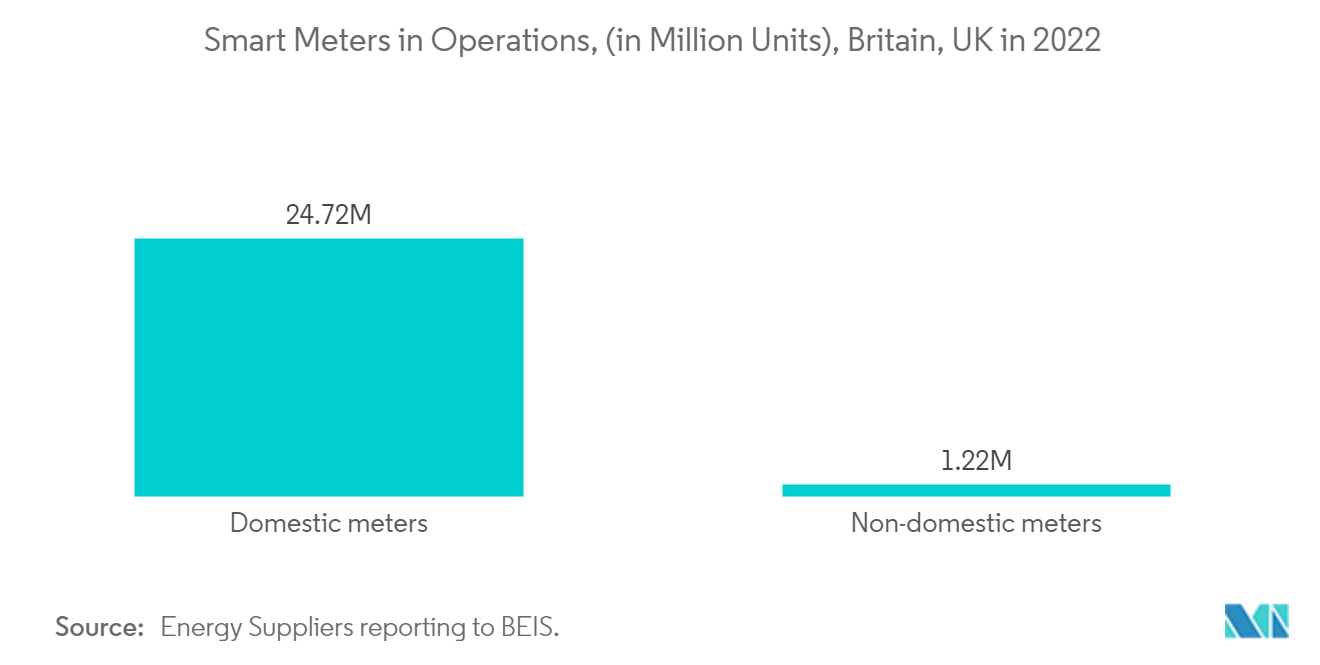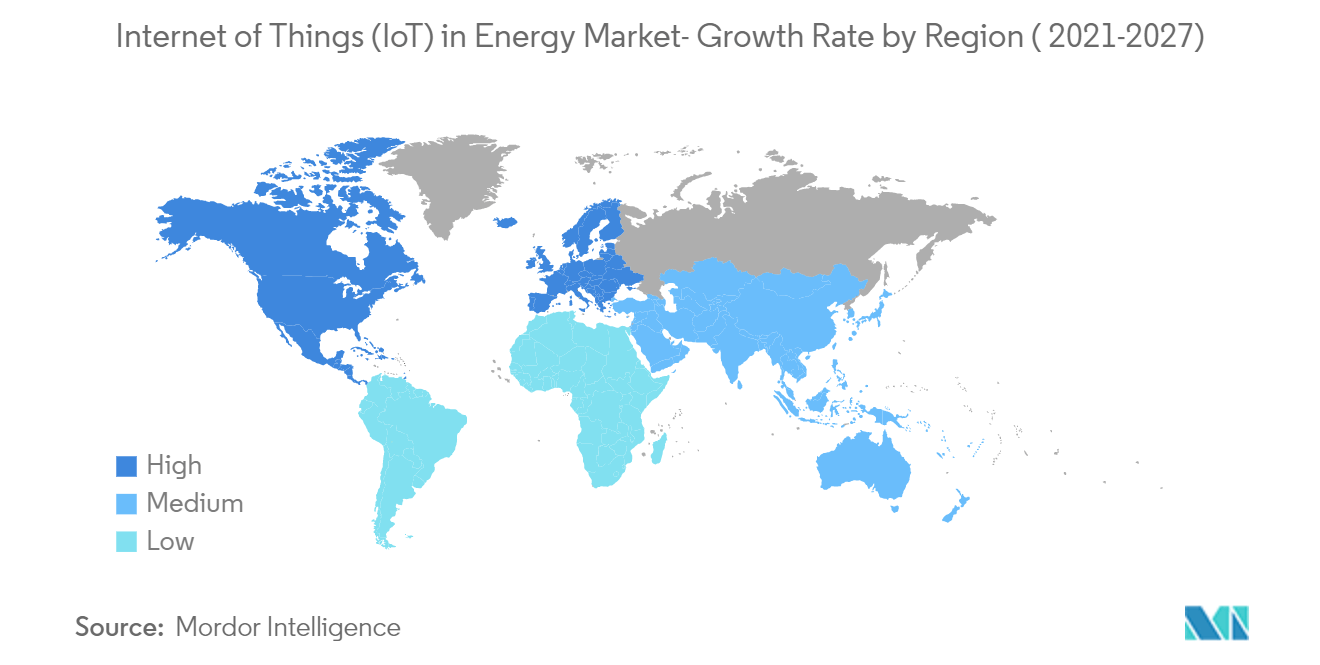Market Trends of Internet of Things in Energy Industry
This section covers the major market trends shaping the Internet of Things in Energy Market according to our research experts:
Smart Meters Expected to Hold Significant Share
- Smart meters have been among utility companies' most adopted IoT devices in the last few years. These devices interconnect buildings with the smart energy grid, which allows these companies to manage energy flow more effectively. Smart cities are also leveraging smart meters.
- With IoT-ready smart meters, organizations can access rich, real-time data to provide better service while reducing costs and boosting profits. Moreover, this helps effectively balance electric loads, minimize power outages, stream energy distribution through more accurate forecasting, and enable dynamic pricing by raising or lowering costs based on real-time demand.
- By upgrading to smart meters and grids, many governments are also trying to utilize IoT to facilitate localized green energy production growth. For instance, the United States Department of Energy is pursuing a smart grid that can help boost the use of green energy while driving down costs in mass. These factors also force energy companies to invest in IoT technology to keep up with everyone around them.
- With smart meter technology, utilities can also empower their customers to make smarter decisions about their energy usage by providing helpful and detailed feedback on energy consumption using precise, real-time data from their smart meter, improving transparency on monthly energy bills, accurate pricing based on usage, etc. These advantages are boosting the market growth.

North America Region to Witness the Highest Growth
- Due to IoT's growing role in the sector, North America is expected to be a prominent market driven by smart energy projects' deployment. Rapid digitalization across industry verticals and technological advancements has also fueled IoT growth in this region.
- The United States and Canada are the early adopters of technologies such as Big Data, IoT, and mobility, creating significant growth opportunities for the IoT market. These countries have established economies, which strongly empower them to invest in R&D activities. Moreover, the start-up culture in the region is growing more rapidly compared to the other areas.
- Moreover, the region has a strong foothold on IoT vendors, contributing to the market's growth. Some include IBM Corporation, Microsoft Corporation, Intel Corporation, Cisco Systems Inc., and Google Inc.
- Canadian manufacturers depend on innovation and investment in technologies to be competitive. In an environment of increasing input, labor cost, and competition from large global manufacturers, companies here are expected to invest in technologies like IoT to remain competitive and maintain their operating margins. US lawmakers have introduced the "IoT Readiness Act" for massive IoT growth with the 5G networks' arrival.
- In comparison to the United States, Canadian companies have been slower to adopt advanced technologies in the previous year. Advanced Manufacturing survey of SMEs in North America. The Canadian energy sector has been procuring internet-connected sensors to monitor various activities across generating plants, distribution networks, and smart home meters.


